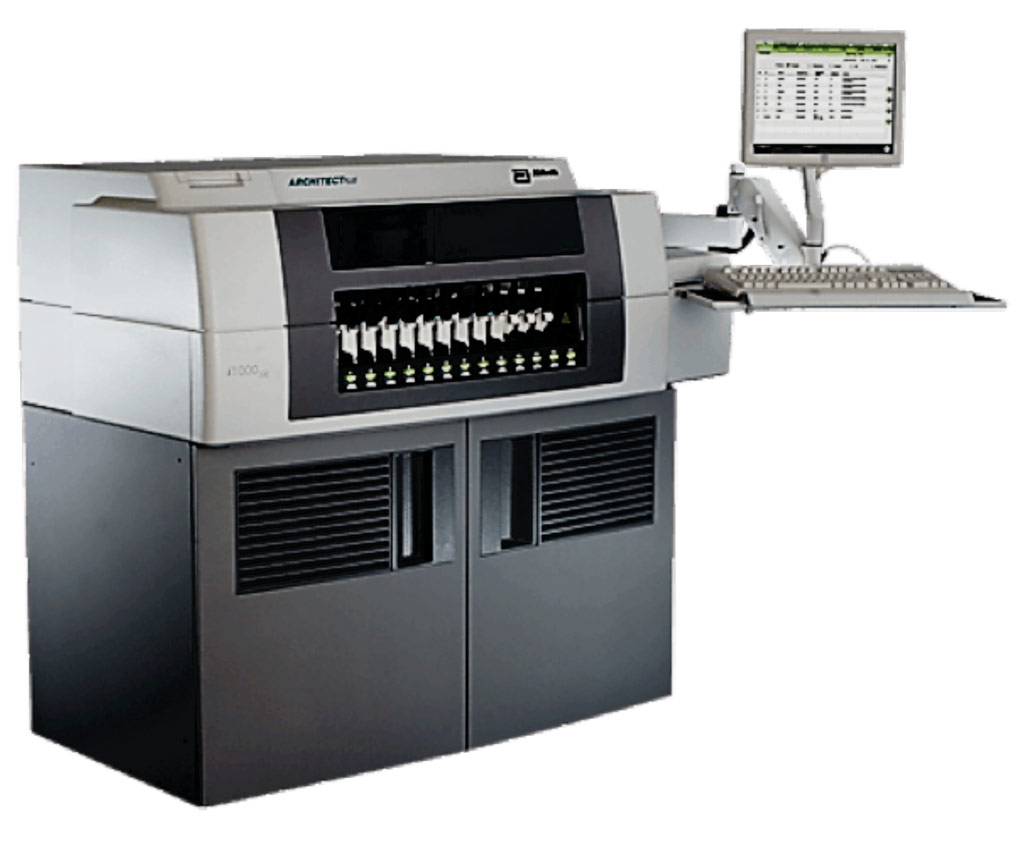New Automated Periostin Immunoassay Developed
By LabMedica International staff writers
Posted on 11 Jan 2017
Periostin is being investigated as a potential biomarker for T-helper-2 (Th2)-driven asthma or eosinophilic inflammation and may help to identify patients more likely to benefit from interleukin-13-targeted treatments.Posted on 11 Jan 2017
The use of serum interleukin-13 (IL-13) itself as a biomarker is challenging because it is expressed locally in inflamed tissue, resulting in very low concentrations in serum and concentrations of serum IL-13 appear to be similar between healthy controls and subjects with asthma.

Image: The ARCHITECT i1000SR immunoassay analyzer (Photo courtesy of Abbott).
Scientists at Abbott Laboratories (Abbott Park, IL, USA) and their colleagues assessed the company’s ARCHITECT Periostin Immunoassay performance in terms of precision, sensitivity, linearity, interference from classical immunoassay interferents and representatives of common asthma medications, specimen handling, and isoform reactivity. The assay has been developed for use with the ARCHITECT Immunoassay i System.
Samples from subjects with idiopathic pulmonary fibrosis, subjects with asthma used in periostin concentration assessments, and normal samples from healthy volunteers were obtained. The test is a monoclonal antibody (mAb) sandwich two-step immunoassay for the quantitative determination of periostin in human serum using chemiluminescent magnetic immunoassay technology. Periostin, the analyte, is captured by microparticles coated with an anti-periostin mAb and subsequently detected with a second anti-periostin mAb conjugated with Acridinium.
The team reported that the percentage of coefficient of variation (CVs) for five-day total precision, assessed using two instruments was less than 6% across two controls and one serum-based panel. Limit of quantitation was 4 ng/mL, using dilution adjusted concentration, suiting the needs for the application. Dilution analysis yielded linear results and no endogenous sample or drug interferences were observed. All known periostin isoforms expressed in the mature human lung were detected by the assay.
The authors concluded that their analysis of periostin concentration in serum samples appeared to show slightly elevated mean periostin concentrations in samples from subjects with uncontrolled asthma compared with apparently healthy volunteers. This is consistent with reports of elevated serum periostin concentration in subjects with asthma, particularly those with Th2-driven asthma or eosinophilic inflammation. The study was published in the January 2017 issue of the journal Clinica Chimica Acta.
Related Links:
Abbott Laboratories














